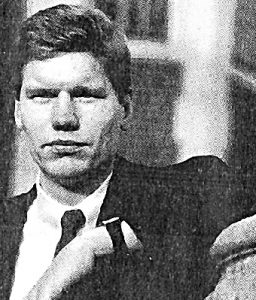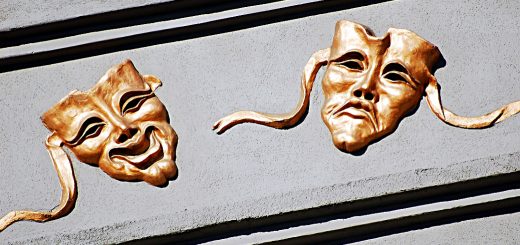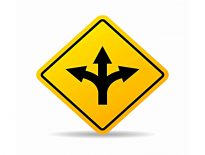Monroe Trout – The Best Return That Low Risk Can Buy

Monroe Trout is a commodity trading advisor (CTA) who is profiled in Jack Schwager’s book The New Market Wizards. His chapter is called The Best Return That Low Risk Can Buy.
This article is part of our ‘Guru’ series – investor profiles of those who have succeeded in the markets, with takeaways for the private investor in the UK.
You can find the rest of the series here.
Contents
Monroe Trout
Monroe Trout is a commodity trading advisor (CTA) who is profiled in Jack Schwager’s book The New Market Wizards, in a chapter called The Best Return That Low Risk Can Buy.
Background
Monroe started out at 17, with a summer job working for a futures trader called Vilar Kelly in his hometown (New Canaan, Connecticut).
- He was hired to type price data into an Apple computer.
Monroe went to Harvard, and knew while he was there that he wanted to be a trader.
- His thesis was on the stock index futures market, and interestingly, he wrote that the probability of very large price moves was much greater than would be assumed using standard statistics.
- This was many years before the books The Black Swan and The Long Tail had been published, and indeed, before the 1987 crash.
This meant that risk control strategies needed to be adjusted accordingly, and therefore Trout doesn’t use much leverage.
- He also found that prices were not independent, and that there were some statistically significant patterns
After Harvard he skipped graduate school and went straight into trading.
- A contact at his college put him in touch with Victor Niederhoffer, head of NCZ Commodities, and Monroe started working there, trading the stock index on the floor of the New York Futures Exchange.
He was mostly scalping – trading for very quick, small profits. There are two main approaches to scalping:
- capturing the spread by taking the opposite side of customer orders;
- arbitrage between related positions (eg. the March contract being out of line with the June)
He learned by asking questions of more experienced pit traders.
- In particular he learned about realistic transaction costs for pit traders, which would determine which strategies might be profitable in practice.
Stops and liquidity
He also learned where people like to put stops – right above the high and below the low of the previous day (one or two ticks).
Since local traders try to get the market to hit those stops, Monroe prefers to use mental rather than actual stops.
- If he were to use stops he would put them at least 10 ticks away (above or below) from the previous high and low.
Other popular places for stops are round numbers – for example the FTSE-100 moving through 7,000.
Markets almost always get to the round number – get in before that number and play the “magnet effect”.
In addition, he learned about liquidity, which came in handy when he started trading in larger sizes.
The most liquid period is the opening. Trading volume typically forms a U-shaped curve throughout the day, with a secondary peak on the close.
Setting up alone
Like many of the other traders that we’ve looked at, Monroe moved off the floor so that he could trade many markets simultaneously.
- After a while, Monroe got fed up with his commute, and figured he could make more money on his own in the long run.
Monroe says that the markets are becoming more efficient, and some of his trading patters no longer work “as other people start picking up on them”.
Trading style
Monroe began trading off computer models whilst still on the floor, and when they made consistent money, he moved off the floor.
His models typically generate trades lasting from a day to a week.
- Schwager found this surprising as in his experience, models with trades of less than a week tend not to beat the market.
- Monroe said that his models were more statistically oriented, and he had very low transaction costs – he generates a lot of trades – so could be profitable with marginal models.
- Monroe estimated that reduced slippage and commissions saved him around 12% a year.
Monroe trades dozens of models and markets at once, for diversification purposes.
- He diversifies across markets and across time (hourly data, daily data, and weekly data).
Monroe uses charts, but:
Primarily to figure out where traders are going to get interested in a market. I know the types of patterns they like to look at.
Performance
When Schwager was researching his book, he looked at the performance of more than 100 CTAs, and Monroe’s risk-adjusted return was the best.
- Over the previous five years – which included the 1987 stock market crash – his average return was 67% pa, and his largest drawdown was 8%.
- He was profitable in 87% of months.
Monroe attributes his success to:
- good research, which provides an edge
- money management
- low commissions and slippage (he estimates good execution of the trades suggested by his models doubles their profits)
- skin in the game
Most of the staff at his firm have most of their net worth in the firm’s fund.
- Monroe has 95% of his net worth in it.
He doesn’t take any money from the firm.
I rent my condo and I drive a cheap car.
Sharpe ratio
Monroe uses the daily Sharpe ratio to measure his performance.
- This normalizes return by risk, using the variability of returns as a proxy for risk.
For some people, this is a controversial definition – at the very least, investors don’t care about upside variability and this should be excluded.
- There is also a school of thought that variability is irrelevant to risk, which is always about permanent loss (or failure to achieve a stated goal).
Schwager gives the example of a trader (A) who trades in double the size of trader B.
- A’s returns would be double (in percentage terms) but so would his risk, so the two Sharpe ratios would be the same.
Most people use monthly data to calculate the Sharpe ratio, but Monroe prefers daily data.
Risk management
Monroe shared a few of his risk management rules with Schwager:
- if we lose more than 1.5 percent of our total equity on a given trade we get out
- if we’re down 4% on a day, we close all positions for the rest of the day
- this rule has been activated only twice over the previous two years
- if we’re down more than 10% per month, we close all positions for the rest of the month
- this rule has never been triggered
- At the beginning of each month, I determine the maximum position size that I’m willing to take in each market.
- I don’t exceed that limit, regardless of how bullish or bearish I get.
Books
Monroe gives his new traders three books, one of which is by Schwager:
- The Complete Guide to the Futures Markets – Jack D. Schwager
- The Handbook of Futures Markets – Perry Kaufman
- The Commodity Futures Game: Who Wins? Who Loses? Why? – Richard J. Tewles and Frank J. Jones
[amazon template=thumbnail&asin=0471893765]
[amazon template=thumbnail&asin=0471087149]
[amazon template=thumbnail&asin=0070647577]
Quotes
I can retire today and live very comfortably off the interest. The minute I don’t have fun trading, or I don’t think I can make a profit, I’m going to quit.
To be a good trader it’s very important to be rational and have your emotions under control.
I’ve been trying for years to get rid of anger completely when I lose money, and I’ve come to the conclusion that it is impossible.
I’ve seen situations where they might be up 1,000 percent over a five-year period, but if you examine their track record in terms of net dollars made or lost, you discover they are actually down.
One of the first screens I would use would be a person’s total dollar profit – how many dollars did the CTA pull out of the market. If that number were negative, I would eliminate the CTA from consideration, regardless of the percentage return.
It’s probably best to be somewhere between a pure discretionary trader and a pure system trader.
Moving averages are useful. They’ll work if you watch your risk management. I believe you can make an above-average return by using moving averages, if you’re smart about it.
Fibonacci retracements, Gann angles, RSI, stochastics – I haven’t found anything there for any of these indicators.
The better I’m doing, me bigger I play, and the worse I’m doing, the smaller I play.
Virtually all good traders are confident in their trading ability.
The markets are clearly not a random walk. The markets are not even efficient because that assumption implies you can’t make an above-average return.
A successful trader is rational, analytical, able to control emotions, practical, and profit oriented.
To trade successfully you have to do it full-time. I allot myself ten vacation days a year, but I never take them. I firmly believe that for every good thing in life, there’s a price you have to pay.
Conclusions
Monroe’s record of high returns with low drawdowns is enviable, and very unusual for a systems trader.
- But since he uses proprietary technical systems to trade dozens of markets and time periods simultaneously, directly applying his methods is difficult for the private investor.
- He also attributes 50% of his profits to superior execution and low commissions.
However, there’s also lots to admire in terms of risk management and (lack of) leverage.
- It’s interesting to note that he was studying tail risks long before this became popular.
There’s also some useful information about stops, liquidity and skin in the game.
- And a list of books for those interested in trading the futures markets.
Until next time.


















